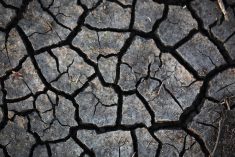Manitoba farm groups think the provincial government’s flood compensation program will work, if it’s done right.
“The general approach is certainly accepted … but the length of time (the flooding lasts) is going to play a huge factor on how beneficial it is,” said Jay Fox, president of the Manitoba Cattle Producers Association.
“If lake levels stay high for 12 months, there are going to be long-term effects on the land.”
Doug Chorney, president of Keystone Agricultural Producers, praised the provincial government for talking to producer groups before putting together the compensation package.
Read Also

Phosphate prices to remain high
Phosphate prices are expected to remain elevated, according to Mosaic’s president.
“There was a lot of back and forth,” said Chorney.
“Government isn’t always so interested in input from outside. It was encouraging to see.”
The program will cost $175 million, of which one-quarter will likely go to farmers, including those affected by the deliberate breach at the Hoop and Holler Bend on the Portage Diversion and around Lake Manitoba.
It will also help pay for mitigation efforts around the Shoal lakes and for other attempts to reduce future problems.
It will cover 100 percent of certain losses, such as the costs of returning property around the Hoop and Holler Bend to pre-flood conditions. Some income losses are also being covered.
Farmers in other areas hit with more natural flooding will probably have to use existing forms of insurance.
The flood on the Assiniboine River and attached systems has had four main components:
• areas where high water levels naturally flooded low-lying land;
• the area flooded and disrupted by the provincial government’s decision to intentionally breach a dike east of Portage La Prairie to protect more heavily populated areas downstream;
• land lying on either side of the Portage Diversion, which channels water to Lake Manitoba. It is not in the Assiniboine’s natural watershed and is controlled by the provincial government;
• land surrounding Lake Manitoba and the upstream and downstream lakes that have seen water levels affected by the redirected flow of water.
Damage tough to determine
Deliberate actions were taken in some of these areas that caused unanticipated flooding, while in other areas the flooding was simply the result of high water levels in the river.
It’s hard to tell in some areas exactly how much of the flood damage was caused by which source.
Chorney and Fox said sorting that out will be important because different levels of compensation will probably be assessed for different situations.
The compensation issue has been a big concern for Manitoba farmers affected by the flooding, but the government program’s large size, scale and adaptability alleviated many concerns.
Manitoba agriculture minister Stan Struthers, who was praised by KAP for holding daily phone consultations with farm groups throughout the crisis and for visiting affected farms, said the government wants the compensation to be easy to apply for and quick to receive.
“We want this money to move very quickly,” he said.
“Some Manitobans paid the price for the rest of us.
“That means compensation. That means fair compensation, and we’re determined to get that in the hands of people who need it without delay.”















